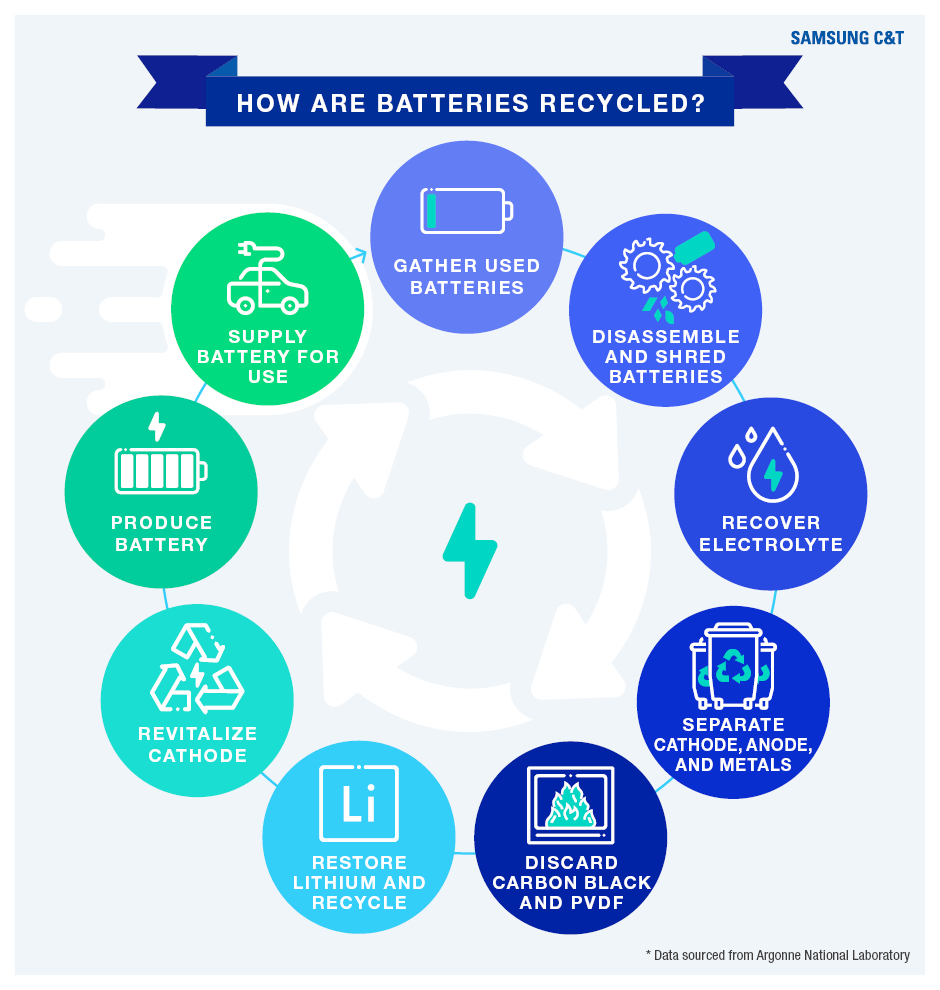Amid the rise of the electric vehicle (EV) industry, we recently looked at the growth of the markets for materials needed to produce EV batteries. This second article of a two-part series will focus on another important part of the EV battery supply chain – recycling.
Recycling EV batteries plays an important role in reducing the waste of vital resources, while offering greater sustainability to the EV industry. That said, it is not a simple process and there are a number of participants involved in the various recycling steps.
Recharging the market through recycling
The EV battery recycling business begins with collecting used rechargeable batteries and extracting their recyclable materials. This is important because there are only limited reserves of the main materials that make up EV batteries, like cobalt and nickel. Recycling them can help sustain the industry and keep up with increasing demand.
Rechargeable batteries must also be handled with care. They can catch fire or explode due to factors such as mechanical damage or overcharging, and this can release hazardous substances. They are prepared for recycling through disassembly via physical and chemical processes. Retrieved materials or components can then be used for new battery production or other purposes as needed.
The size of the global lithium-ion battery recycling market was about USD 1.5 billion in 2019 and this is expected to exceed USD 12 billion by 2025. The U.S., China, and Germany are among the nations leading the market. Today, a lot of businesses are involved in battery recycling across various stages, such as automotive OEMs, lithium-ion cell manufacturers, cell component manufacturers, and independent recyclers. China is currently the only part of the world equipped with the scale to fully influence the market, having various types of battery recyclers.
As the diversity and scale of this industry continues to grow, market tracking consultancy Circular Energy Storage estimates that Europe will have 132 metric kilotons of lithium-ion batteries to recycle by 2030 and the U.S. will have around 80 metric kilotons.
If managed effectively, the economic benefits of recycling lithium-ion batteries are clear to see. Not only can it reduce the need to keep mining limited minerals, but it allows the whole EV industry to be more resilient against the risks in the supply and distribution chain.
Samsung C&T’s place in the EV battery recycling chain
Samsung C&T Trading & Investment Group is also one of the companies taking part in battery recycling. It is joined by investors in collecting nickel and cobalt via the rechargeable battery recycling business, and then supplying these materials to manufacturers of rechargeable batteries.
So, while you might not notice it when they quietly drive by, behind every EV is a long chain of suppliers, traders, and technological development. And all indications suggest that the chain is getting stronger.










